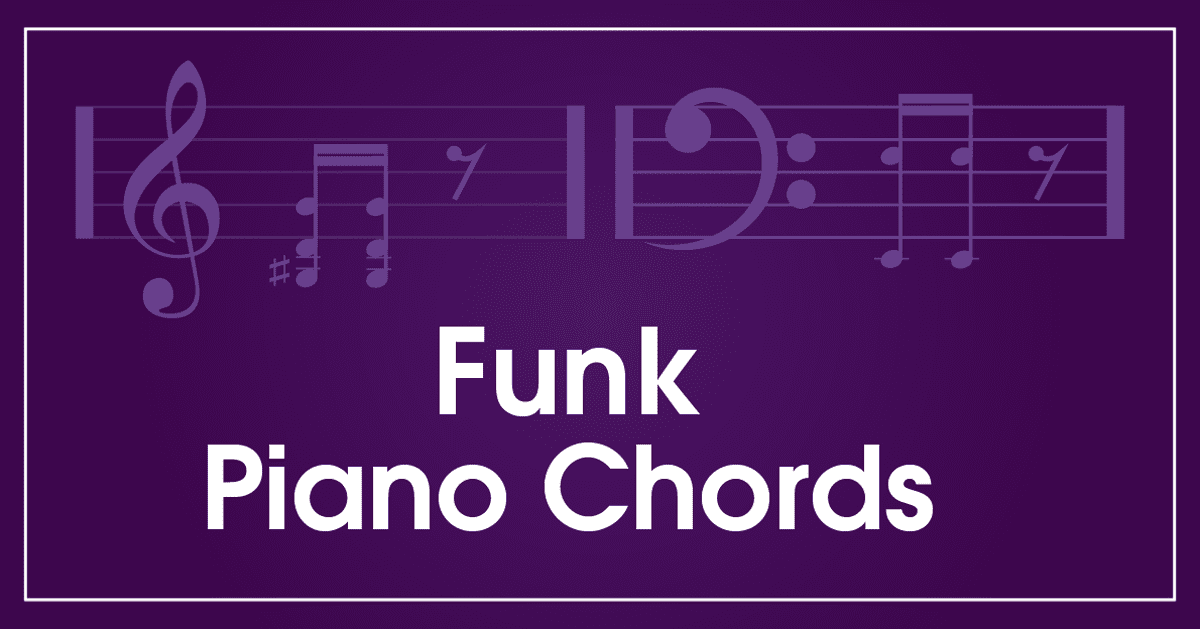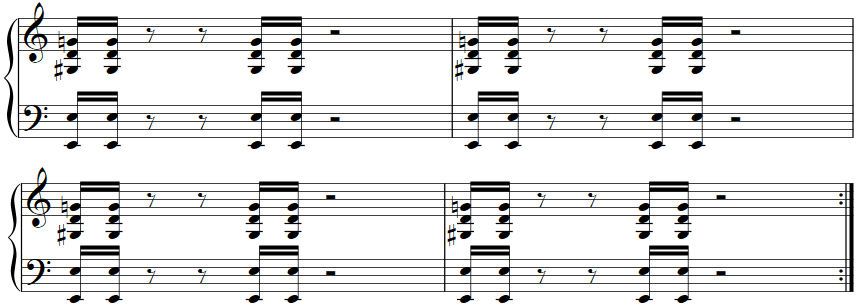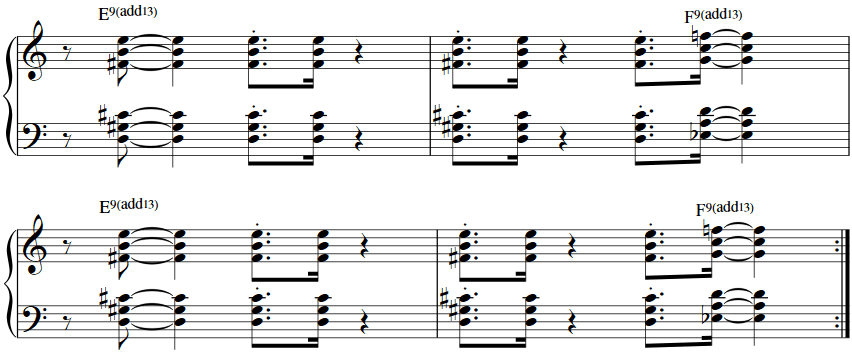Funk Piano Chords

In this article we're going to look at a few different types of funk piano chords that are important parts of funk playing. These funk piano chords can be used in various settings and genres so we'll spend some time looking at the specific voicings that are being used as well as the theory behind these chords. By explaining the voicings and the theory you will hopefully have a better understanding of how the chords are constructed and how to build and use these funk piano chords in different keys. Let's get started!
Funk Piano Chords: Sharp 9 Voicings
Sharp 9 chords refer to dominant 7th chords. The 9th is what we call an "available upper extension." Although the 9th as an upper extension can be used on major, minor, and dominant 7th chords, the "sharp 9th" is referred to as an "altered extension" and it is generally only used on dominant chords. The sound of the dominant 7th sharp 9 chord is a classic funk sound. Below is a simple funk riff using an E7#9 chord. For another classic example of the dominant 7th sharp 9 chord in practice check out our lesson on Stevie Wonder's hit "Higher Ground."
Funk Piano Chords: Side-stepping (Taking it Outside)
Another very classic funk piano chord technique is called side-stepping. Side-stepping, also called "outside" playing, refers to playing a chord that seemingly has nothing to do with the chord you want to play. Why would you do that? Because by playing a chord that is a step away from the chord (or key) which you intend to play, and then resolving that "outside" chord to your target chord, you create a cool-sounding resolution. This is often referred to as "taking the chord outside" and can be a very effective technique for creating funky tension and resolution, provided you know how to resolve to the "inside" chord. Generally we use this side-stepping technique by playing a chord a half-step above or below our intended target chord.
Take a listen to the example below which uses the same E7#9 chord in the above example, but adds some of these side-stepping/outside chords (half-step above and below) to create some cool-sounding resolutions.
NOTE: There is an error in the sheet music below. The Eb7#9 voicing should have an F# as the top note, not G#.
Funk Piano Chords: Quartals (Two-Handed Voicings in 4ths)
We've been working through some dominant 7 #9 chords above. We are voicing these chords in 4ths in the right hand, meaning that the individual notes of the chords are stacked in 4ths. For example, the E7#9 chord begins with the G# (the 3rd), then uses a note up a diminished 4th (D, the 7th), and finally stacks a note up another 4th (G, the #9). Let's take this idea of stacked 4ths to build a two-handed dominant voicing. We'll use an E7 chord with various upper extensions and comp through our funk groove.
Check it out:
Let's investigate the voicing that we're using for the chords above. From bottom-up, we're spelling our E7 chord as follow: D (7th), G# (3rd), C# (13th), F# (9th), B (5th), E (root). The stacked 4ths - or quartals, as they're called - gives the chord a very angular sound.
Be sure to practice all of these chords in various other keys.


